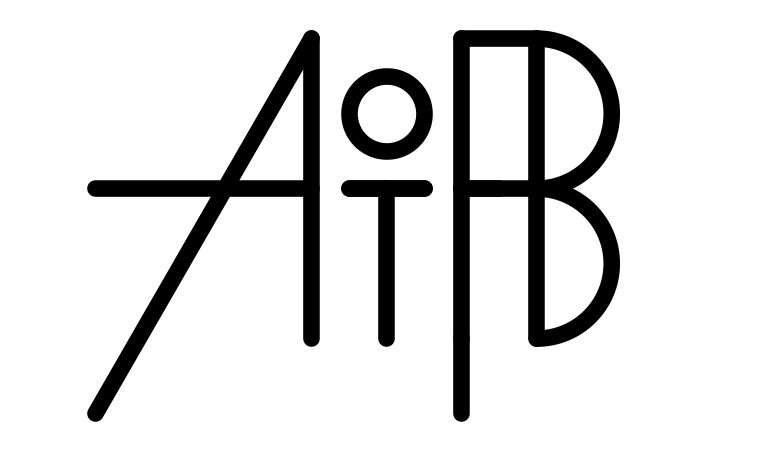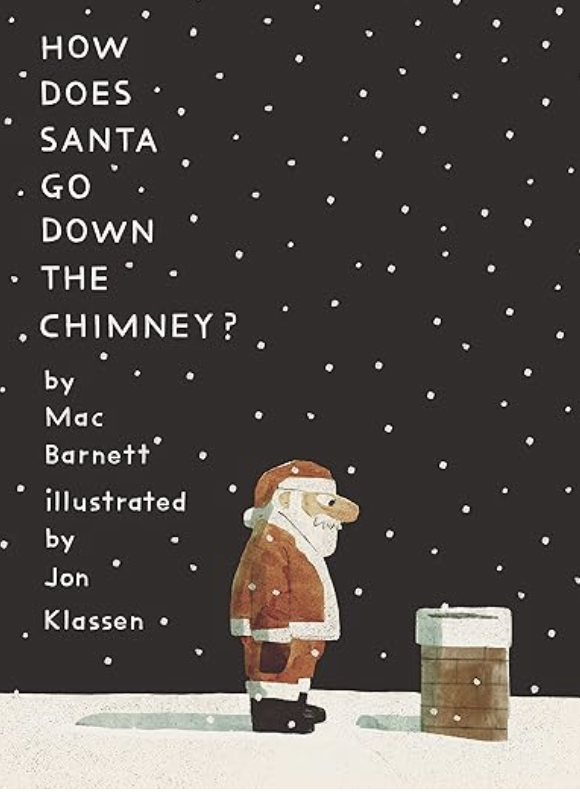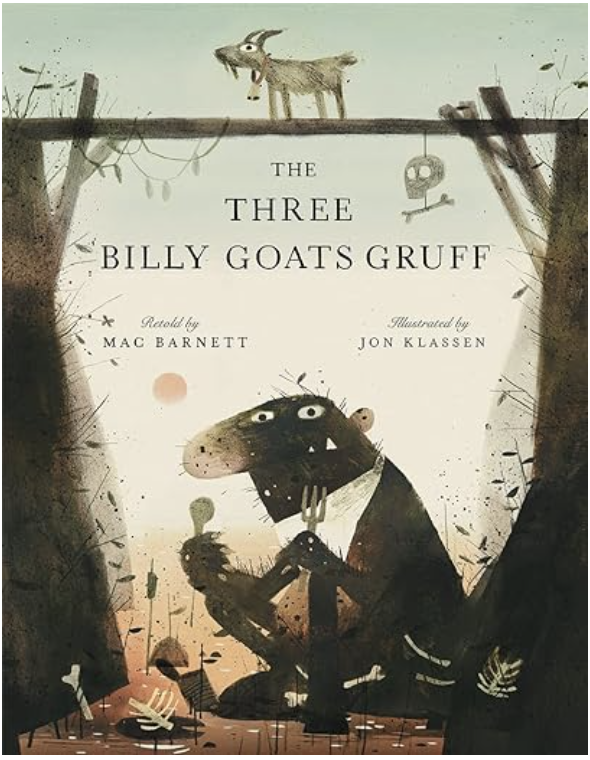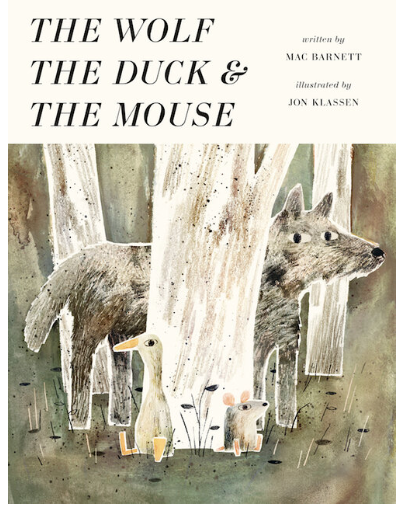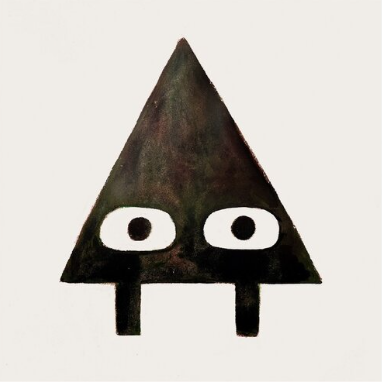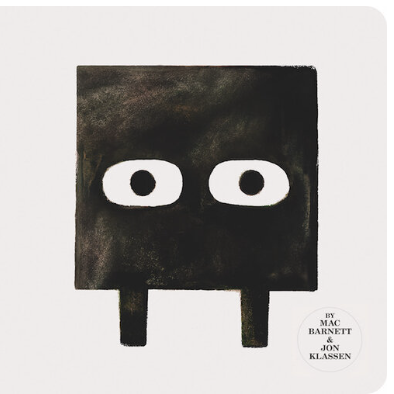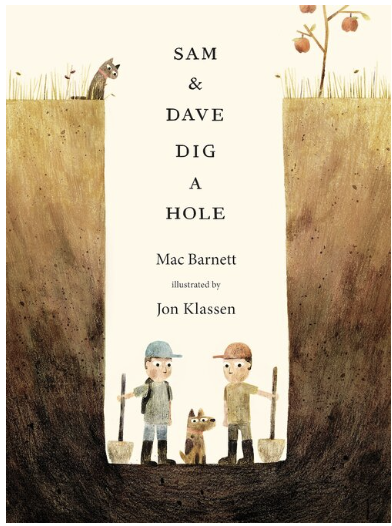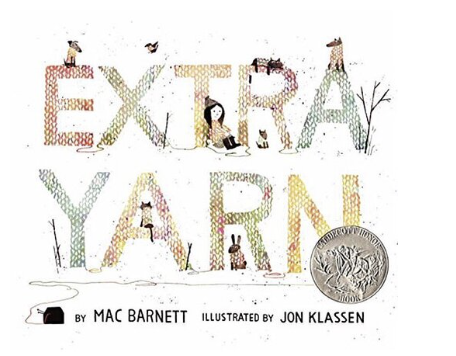An Interview with Jon Klassen & Mac Barnett
Jon Klassen and Mac Barnett
November 20, 2023
We interviewed Jon Klassen and Mac Barnett about their latest collaboration (Klassen as illustrator, Barnett as author), How Does Santa Go Down the Chimney? Klassen and Barnett are both award-winning children’s book creators. This is our second interview with them together and we have also interviewed them several times on their own or with other creators.
Selection of Collaborative Work
Cover of How Does Santa Go Down the Chimney?, by Mac Barnett, illustration by Jon Klassen
Mac/Jon: On the cover, Santa seems to be considering the question in the title: How Does Santa Go Down the Chimney? Did that question come up between you as the seed that developed into the idea for the book?
Mac: This book definitely started with the title. It’s lucky when that happens. I don’t very much like titling books when I’m finished with them (which is usually the way it works). I wrote the manuscript and then I sent it to Jon, not to illustrate necessarily, but just because he’s one of the few people I share things with before they come out. I could tell he had some ideas for it right away. He kept saying he knew exactly how the cover should look (and the cover he described was the picture in my head too).
Jon: I like that the cover shows a Santa who looks like he knows about as little about the answer as we do. Everyone has told him he does this, and it seems fairly straightforward, but then you get up there.
Mac: Is the text/story based on a childhood experience?
Mac: It’s a question I’ve wondered about ever since I was a kid. We lived in an apartment without a chimney, so I talked it over with my mom a lot.
Jon: The places in the illustrations are pretty specific to my spending part of growing up in Niagara Falls, Canada. The neighborhood we lived in had a lot of low smallish houses built around the ’40s and ‘50s I think. I had a paper route there for a few years, so approaching a bunch of similar-ish houses and their entryways in the snow was something I remembered. It was neat to draw them.
Mac/Jon: With kids of your own now, has this question come up?
Mac: My son is two and a half so this is the first year that Santa’s really on his radar. (Though Santa is very much on his radar.)
Jon: My sons are 6 and 4, and so far they aren’t as concerned with the how as the what gets left. As long as the right things are under there, I think they’re ok with any method of entry.
Jon: If so, do any of your illustrations depict one of the possible answers they came up with?
Jon: These theories are all Mac’s. I take no credit/blame.
Mac/Jon: It’s so clear that you enjoyed working on this book together. This is the eighth book of your long history of collaboration. Has anything changed over the years in how you manage that connection? Was there a unique aspect to this collaboration?
Mac: Our process changes from book to book, though it’s always more collaborative than the industry standard. Even this book, which worked more like it was “supposed to,” with my passing a completed manuscript off to Jon, involved plenty of conversation and finessing and rearranging. The changes would probably feel like little from the outside, but they’re important to making a picture book hum.
Jon: Our initial conversations about this book, where I was thinking specifically about how the end would work, where the book gets a little more sincere and sentimental about the whole thing, we had the same thoughts on that, so that was a really firm foundation. When it does go the way this one went, where the text is largely the same before and after I illustrate it, our interaction is mostly me sending Mac pictures as I do them so he can say he likes them and he is proud of me and good job Jon. That’s important, too.
Interior spread from How Does Santa Go Down the Chimney? by Mac Barnett, illustration by Jon Klassen
Mac: You have said before that you strive to leave room within your text for interpretation by the illustrator, creating opportunities for them to step in with their own spin. Was that an instinct of yours from the start or has it developed over time as you have been working with illustrators?
Mac: The relationship between text and image is what first drew me to the picture book, and I think (and hope) that there’s plenty more to discover about the possibilities of combining words and pictures. I remember when I sent my first manuscript to Jon Scieszka, who’s a hero of mine, he sent it back with all the visual description crossed out. He said something nice like “This is all great writing, but the pictures are going to show it.” That was pretty revelatory. I’d made use of wordless spreads, had spots where the illustrations were contradicting the text, but I hadn’t realized that description, foundational to so much belletristic prose writing, is much less useful in picture books.
Jon: Though the illustrations began as graphite and ink, you finished them digitally. Do you depend on a tactile approach to creating your original illustrations to honor your unique style instead of shifting to an entirely digital treatment?
Jon: Yeah, I like the little accidents and dirt you get from materials. I really admire illustrators who can pull off a totally digital process — I don’t think there’s a right or wrong way to do any of this. I mostly use digital tools to compile all the pieces that I make on paper, and then adjust and tweak them once they’ve been scanned into the computer. Knowing that last stage is there loosens me up and makes the whole thing more enjoyable.
Interior spread from How Does Santa Go Down the Chimney? by Mac Barnett, illustration by Jon Klassen
Jon: The green-tinged shadows and grainy textural backgrounds are compelling and atmospheric. Are these digital effects or an aspect of the original art?
Jon: Most of the final color is the result of digital adjustment. The pieces on paper normally do use color, but never the color I want. They’re more like color placeholders that I’ll bring around later. Any graininess or noise, though, is from the materials I use initially. The noise and grain is largely the point of using those tools. I find it’s really hard to get nice texture digitally, and texture and noise is most of what interests me about making print work.
Mac: Your writing often speaks directly to your audience, drawing children (and adults) in with this approach. Another recent example is Twenty Questions. Where does this direct conversational style for your stories come from?
Mac: I got my start telling stories out loud to kids, and it’s probably an instinct I developed then. Picture books are so tied to the oral tradition, that they’re almost always read to kids and not by them, and so it just feels right.
Interior spread from How Does Santa Go Down the Chimney? by Mac Barnett, illustration by Jon Klassen
Jon: As always, the eyes of your animals (all the dogs and reindeer!) and this time even Santa, are so expressive. With the subtlest of shifts, there is so much to understand (we love the look on Santa’s face as he stares balefully down at the lone carrot on the plate). Do you begin an illustration knowing the eyes will be the focal point or does that evolve from your style?
Jon: The setup, visually, is engineered to push certain things for sure, and the eyes are a priority. Since the look of this book, especially the interiors of the houses etc., were a little washier and less bold, it was super important to know that the eyes would “pop” and be clear so the viewer knows where to look. Once you know how to do that or have a little recipe for it, it makes you braver and more relaxed when you’re composing the rest of the picture. I often think that a lot of the emotion or expression attributed to the eyes is mostly because they are simply clearly shown. We, as an audience, like looking at eyes, and we like reading things into eyes. It doesn’t take much to set us on our way, emotionally, once we’ve found them.
Mac/Jon: Okay, we have to know: what is in the mug the reindeer is handing Santa?
Jon: Nobody knows, but we have some ideas.
Thanks again, as always, for taking the time to share the details of this, your latest, creative collaboration.
For more on Mac Barnett:
For more on Jon Klassen:
Interview with Jon Klassen: A Return Visit
Interview with Mac Barnett and Jon Klassen
Interview with Mac Barnett and Isabelle Arsenault
Interview with Mac Barnett and Adam Rex
How Does Santa Go Down the Chimney? ⓒ 2023 by Mac Barnett, illustration ⓒ 2023 by Jon Klassen. Reproduced by permission of the publisher, Candlewick Press, Somerville, MA.

